Best Anzac Day and drink recipes
Anzac Day is going to be different this year — but you can still commemorate our fighting Aussie spirit with these simple recipes.
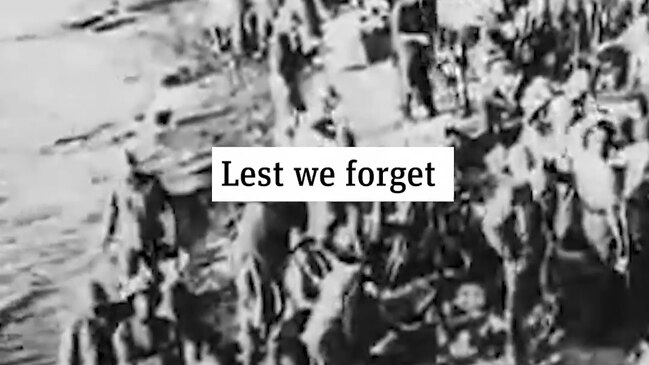
Hibernation
Don't miss out on the headlines from Hibernation. Followed categories will be added to My News.
We all love a good Anzac biscuit at this time of year, with the traditional accompaniment of “hard versus chewy” debate.
But beyond the golden treat there’s not a lot of other traditional Anzac Day food — especially compared to other big days in the Australian calendar.
That’s largely for two reasons: Anzac Day is of course about reflection and commemoration, not feasting; and soldiers traditionally don’t eat like gourmets (although modern mess food can be terrific) — the original Anzacs at Gallipoli in particular had dreary, deficient rations.
If you want to try those basics for yourself tomorrow — and it can be a fascinating educational experience, especially with kids wanting to know tangible realities of our wartime stories — prepare “ration packs” based on these Anzac Cove staples: Bully beef (tinned corned beef), rice, jam, cocoa and tea (usually with water not milk; and sometimes with a tot of rum) and bread. There was also of course the infamous “hard tack” biscuit — and we’ll tell you how to make that below.
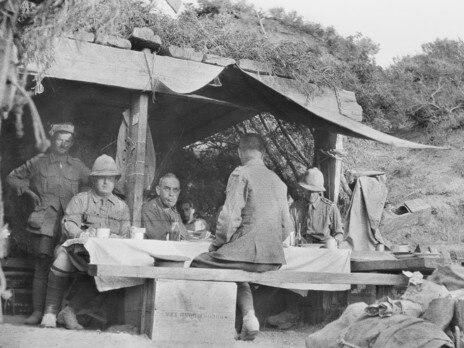
The soldiers at Anzac Cove of course did their best to brighten these up with whatever rare other items arrived.
Those that went on to the Western Front in 1916, while facing warfare that was even more horrific, at least had the small comfort of much better food, behind the lines and even sometimes in the trenches thanks to field kitchens.
In France of course the lads also discovered the welcome treat of “plonk” — a mangling of the French term for white wine, “vin blanc”.
In post-WW1 conflicts rations generally continued to improve — although for prisoners of war in WWII that was not true, and many starved.
Given Anzac Day’s roots in the Gallipoli campaign, today we’ve sourced some recipes from our mates at Taste.com.au and Delicious that provide a 2020 twist on the basics above (purists, feel free to stick to the basics themselves!) and a “hard tack how-to” from the experts at the Australian War Memorial.
WHAT TO EAT
Hard Tack
Courtesy of The Australian War Memorial
Caution: Hard tack is really hard! There are stories of soldiers breaking their teeth on it, so be careful! Some soldiers ate it with jam, others dunked it in tea or cocoas or broke it up to mix with water and powdered milk for porridge.
Makes six biscuits.
Ingredients
1½ cups self-raising white flour
3 cups self-raising wholemeal flour
5 tablespoons sugar
3 tablespoons milk powder
pinch salt
1 cup water
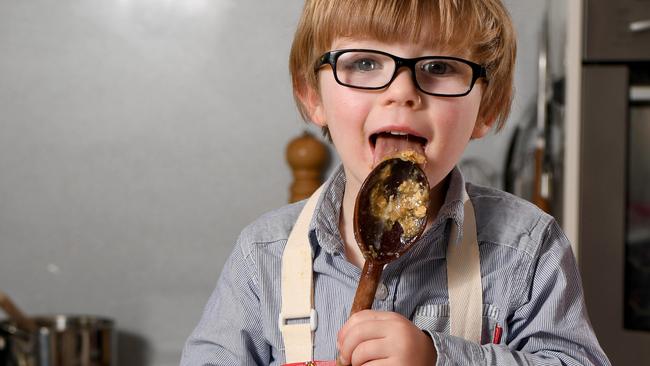
Method
Preheat the oven to 180C.
Place dry ingredients in a large bowl and mix together.
Make a well in the centre and add the water. Mix together until an even dough is formed.
Turn the dough onto a floured board and knead for a few minutes. Shape the dough into a ball and let rest for half an hour.
Divide the dough into three and then roll each ball into thick 1cm sheets.
Cut the rolled sheet of dough into 9 cm squares, using the edge of a steel ruler, rather than a knife. This pressing action helps to join the top and bottom surfaces of the biscuit and will improve the “lift” in baking.
Now make a regular pattern of holes in each biscuit, five holes across by five holes down (25 holes in all). The ideal tool to use to make these holes is a cotton bud with the cotton wool cut off or the thick end of a bamboo skewer. Push it through to the bench, twist slightly and withdraw. (Some historians claim that each biscuit had 49 holes.)
Place on a slightly greased baking tray, being careful that the biscuits are not touching. Form a wall around the outside edge with scrap dough. This will stop the outside edges of the biscuits from burning.
Bake on the centre shelf for 30-40 minutes or until golden brown. Be careful not to burn them!
Leave the biscuits on a cooling rack until they harden. Or switch off the oven and return the biscuits to the oven until it becomes cool.
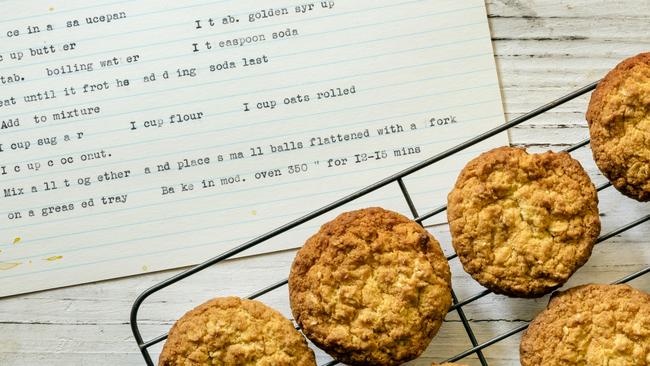
Anzac biscuits
Do you like your Anzac biscuits crunchy, chewy or crisp? This basic recipe gives you three different twists so you can bake the ultimate crowd-pleasing bickies.
Soft and chewy: Omit the brown sugar and increase the caster sugar to 155g (3/4 cup).
Dark and crunchy: Omit caster sugar. Increase the brown sugar to 155g (3/4 cup, firmly packed). Bake for 18 minutes.
Thin and crispy: Omit the caster sugar. Increase the brown sugar to 200g (1 cup). Reduce the flour to 115g (3/4 cup).
Ingredients
150g (1 cup) plain flour
90g (1 cup) rolled oats (see Notes)
85g (1 cup) desiccated coconut
100g (1/2 cup, firmly packed) brown sugar
55g (1/4 cup) caster sugar
125g butter
2 tablespoons golden syrup
2 tablespoons water
1/2 teaspoon bicarbonate of soda
Method
– Preheat oven to 160°C. Line 2 baking trays with non-stick baking paper.
– Combine flour, oats, coconut and combined sugar in a large bowl.
– Stir the butter, golden syrup and water in a small saucepan over medium heat until the butter melts and the mixture is smooth. Stir in the bicarbonate of soda. Add to the oat mixture and stir until well combined.
– Roll level tablespoonfuls of the oat mixture into balls and place, about 5cm apart, on the prepared trays. Flatten until about 1cm thick. Bake, swapping trays halfway through cooking, for 15 minutes or until light golden. Set aside for 10 minutes to cool slightly before transferring to wire racks to cool completely.
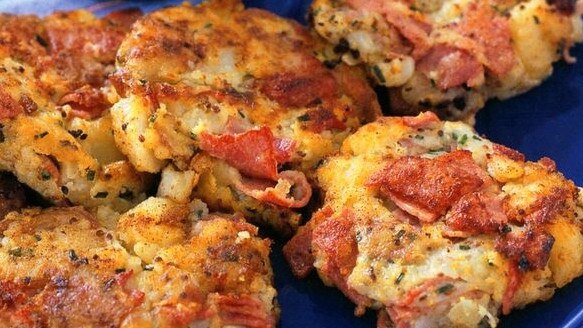
Corned Beef Hash Cakes
Courtesy of taste.com.au
Hash browns are given a meaty make-over in this delicious corned beef version.
Ingredients
1.2kg Desiree potatoes, whole, unpeeled
350g sliced corned beef, roughly chopped
2 tablespoons wholegrain mustard
1/4 cup finely chopped chives
2 eggs, lightly beaten
1 cup plain flour
2 tablespoons olive oil
1 tablespoon butter, melted
Method
– Line a baking tray with baking paper. Place potatoes into a large saucepan. Cover with cold water. Bring to the boil over high heat. Reduce heat to medium. Cook, uncovered, for 25 to 30 minutes or until tender. Drain. Allow to cool for 10 minutes.
– Roughly mash potatoes (so that they are still chunky). Set aside for 30 minutes to cool completely.
– Add beef, mustard, chives, eggs, and salt and pepper to potato. Stir until combined. Place flour into a separate bowl. Using 1/4 cupful of mixture at a time, shape potato mixture into 8cm (diameter) patties. Place onto prepared tray. Refrigerate for 2 hours or until firm. Lightly coat patties in flour.
– Preheat a barbecue plate or frying pan over medium heat. Combine oil and butter. Brush over barbecue plate/pan. When sizzling, add patties, in batches if needed. Cook for 3 to 4 minutes each side or until golden. Serve with chutney.
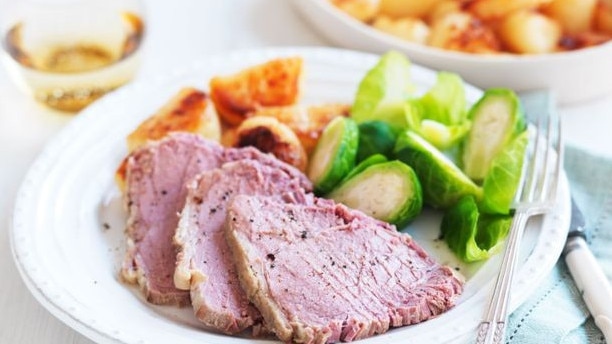
Slow-cooker corned beef
Courtesy of taste.com.au
Using a side of beef, as opposed to canned beef, this is a deliciously easy dinner recipe. Save some of the meat for sandwiches the next day too.
Ingredients
2.5kg piece uncooked corned silverside, fat removed, rinsed
1 litre (4 cups) water
1 medium brown onion, coarsely chopped
10 whole peppercorns
2 Bay Leaves
2 tablespoons brown sugar
Method
– Place silverside into the bowl of a 5 litre slow-cooker. Add remaining ingredients.
– Cover with lid. Turn slow-cooker on low. Cook for 8 hours or until silverside is tender. Serve with roast potatoes and steamed brussels sprouts.
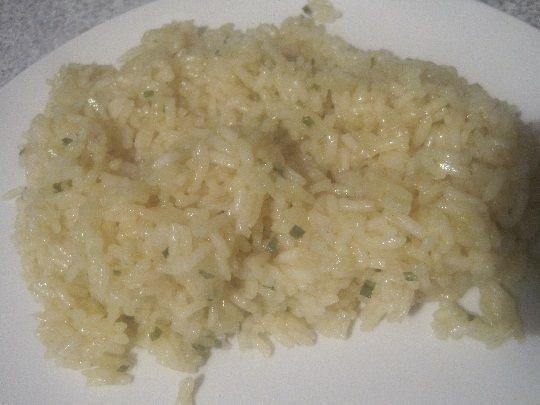
Savoury Rice
Courtesy of Australia’s Best Recipes
A simple way of jazzing up plain rice. You can add garlic or spring onions.
Ingredients
3 tbs butter
1 onion finely chopped medium
1 cup rice
2 1/2 cups hot water
1/2 cup dry white wine
4 chicken stock cubes
1 pinch salt and pepper
Method
Microwave butter and onion for one minute.
Add rice, cook for 3 minutes.
Blend together water, wine and stock cubes, then add 1 cup to rice. Cook for 5 minutes.
Add remaining liquid and cook for 12-14 minutes.
Allow to stand for 5 minutes before serving.
Garnish with chopped chives or fried fine grated pumpkin.
WHAT TO DRINK
What does one drink on Anzac Day?
The original Anzacs’ go-to beverage was tea, consumed with sugar; cocoa was also consumed in the trenches.
Condensed milk was sometimes available, though seen as a real treat.
Another treat was, of course, the rum ration or anything else with kick — although it’s fair to note a number of soldiers in WW1 were teetotal.
At the first Anzac Day commemoration held by Gallipoli veterans in Egypt in 1916, a number chose to consume whiskey and milk.
By the time the lads got to France they began experimenting with the country’s plentiful and cheap wine (vin blanc = “plonk”) in the many “estaminet” bars that sprang up behind the lines.
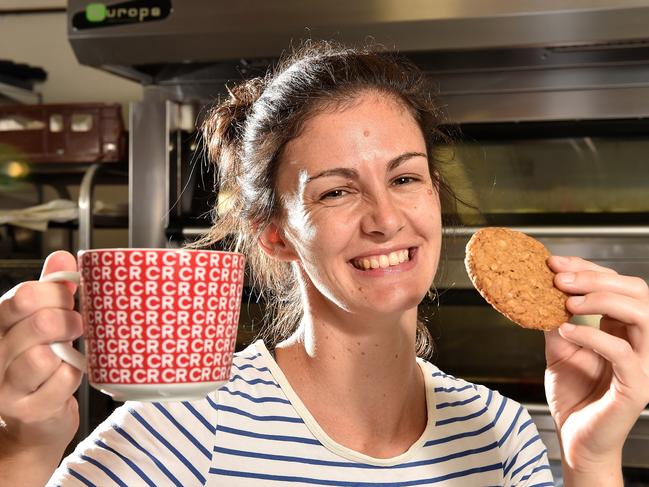
Perhaps the most traditional drink associated with the day is “Gunfire” — a tradition for Aussies, Kiwis and Poms alike, and in essence a dash of rum or other spirit in a hot mug of tea or coffee, taken in those last dark moments before dawn.
For many soldiers facing the nerve-racking prospect of a dawn attack the idea of solid food was sickening, so such a beverage, with its added dash of Dutch Courage, may have been all they could stomach.
Decades on, those marking Anzac Day in peacetime often expand the Gunfire Breakfast to a full fry-up.
* In a nod to the traditional Gunfire, today the delicious. team’s John Hannan will create a 2020 variation for you to try — although aimed for later in the day than breakfast.
In his take on an Anzac Day cocktail, you’ll find strong black tea steeped with cinnamon and golden syrup and finished with a shot of rum, served warm with a side of Anzac biscuits. He’ll show you what to do on delicious. Instagram stories (@deliciousaus) at 5pm today.
Originally published as Best Anzac Day and drink recipes


